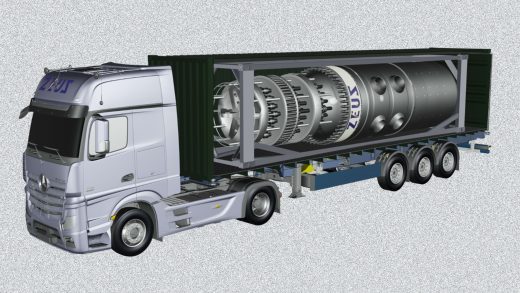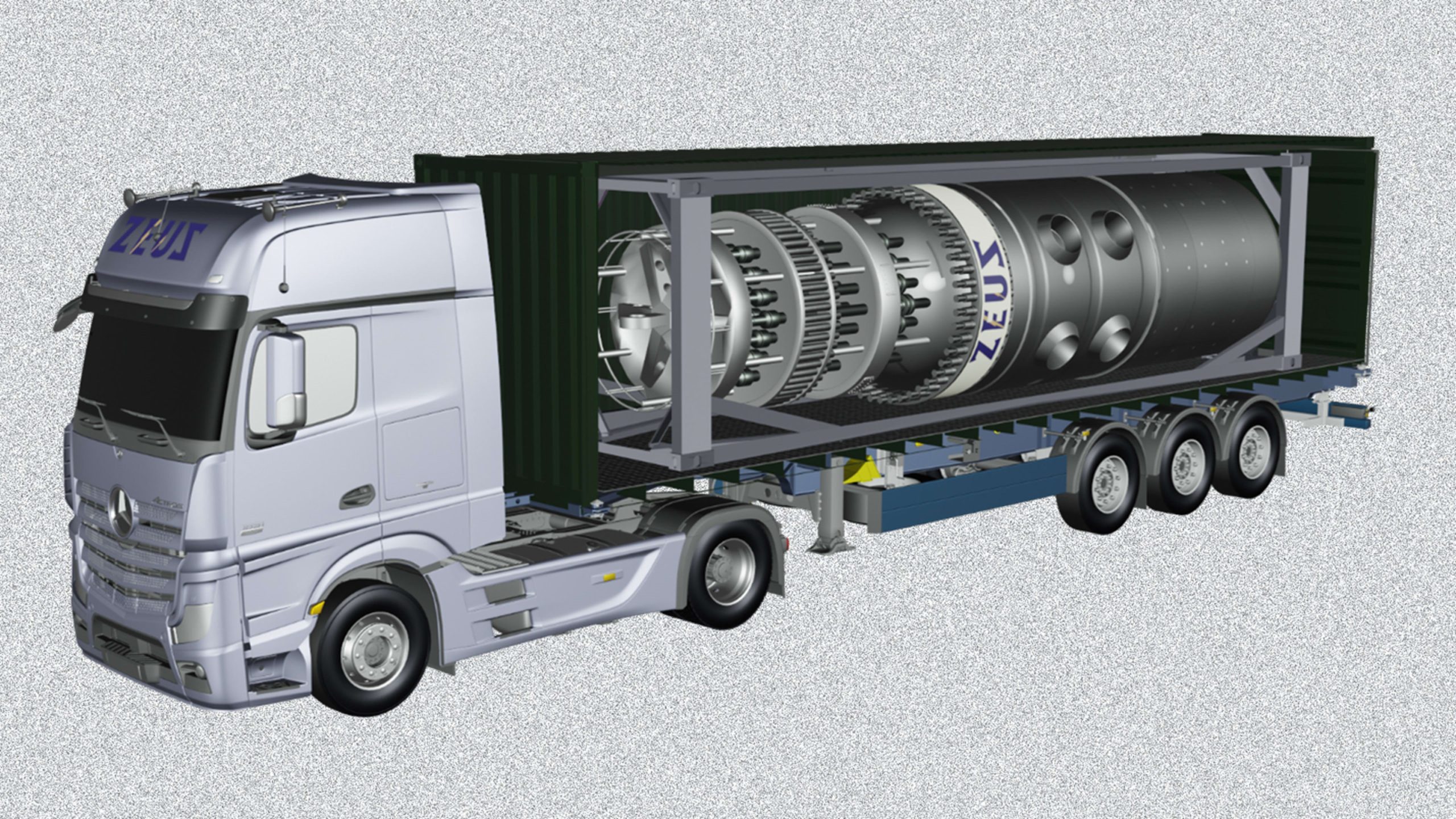Nano Nuclear wants to reinvent the nuclear power business—but it could take a while
Nano Nuclear wants to reinvent the nuclear power business—but it could take a while
The company is trying to not only reinvent reactors but also reinvent fuel production and transportation. It’ll take several years yet before we know if it works.
BY Tiernan Ray
Nuclear energy is responsible for 19% of U.S. electricity production, fourth in line behind natural gas, coal, and renewable energy sources such as wind. All three of those other sources seem to have a better future than the stagnant nuclear power business, which has seen only three new reactors built in the past 20 years.
This week, a two-year-old company, Nano Nuclear Energy, is expected to go public on Nasdaq with a plan to solve what ails the nuclear power business.
The company, officially based on the 30th floor of an office building in New York’s Times Square, is a “distributed” company, meaning, its 27 staff members live and work here and there. The company is run by CEO James Walker, a physicist who was previously a nuclear engineer at Rolls-Royce.
Walker has gathered a mish-mash of engineering talent and former bankers to build what’s called a “microreactor,” also known as a “small modular nuclear reactor,” which can be hitched to a tractor trailer and driven around the country to wherever it is needed—be it a remote mining site that needs power, or an AI data center.
Walker has also assembled a star-studded advisory board that includes former U.S. presidential candidate and NATO commander Wesley Clark, and former New York governor Andrew Cuomo, who hold stock options in the company.
The premise of Nano Nuclear is the same that propels competitors such as privately held Terrapower and X-Energy: conventional nuclear energy is too costly.
Conventional reactors can produce a gjgawatt of power, giving the U.S. the largest installed capacity of nuclear in the world, 97 gigawatts. But such reactors require numerous buildings at a fixed site, leading to massive costs.
Of the 54 nuclear plants in the U.S., housing a combined 94 reactors, the largest, Plant Vogtle, near Waynesboro, Georgia, has four reactors. The two newest reactors started construction in 2009 and were supposed to cost $14 billion to build, and go into operation in 2016 and 2017, according to the Energy Information Administration, the record keeper of the U.S. Department of Energy.
Instead, because of “significant construction delays and cost overruns,” said the EIA, the first reactor only started operating last summer, and the second came online in March. The utility running Vogtle, Georgia Power, now estimates the two new reactors will cost a combined $30 billion, more than twice the initial estimate.
That excess is despite the fact the two new reactors represent the latest in reactor design, the “AP1000,” designed by Westinghouse, which uses 50% fewer valves, 80% less piping, and 70% less cabling. Such economy reduces the total area of the plant to 3,000 square meters from over 10,000 square meters conventionally.
That efficiency is not helping an industry in the doldrums. Vogtle’s two reactors, and a third reactor, Watts Bar in Tennessee, are the only additions to the nation’s fleet since the mid-1990s. The high cost means nuclear attracts relatively fewer investors. Dozens of reactors, meanwhile, have been decommissioned as they reach end-of-life.
To solve the problem, Nano Nuclear and competitors have jumped on the DOE’s effort to make “advanced” reactors, things so compact they can ride around on a semitruck and be parked where needed. They produce far less energy, on the scale of tens of megawatts, but also can cost far less, claims the DOE, and they can be run with minimal safety oversight because of their advanced design.
Just about every company in nuclear power is working on such innovation, including Westinghouse, Terrapower, X-Energy, and publicly traded NuScale of Portland, Oregon. Walker and team contend, however, that those companies are going about it all wrong. They haven’t done enough to solve the main limiting factor of small reactors, adequate fuel supply, the enriched uranium that creates the nuclear chain reaction.
“Large SMR companies have raised billions of dollars for development but have been stalled by the lag in developing or acquiring the fuel necessary to advance their reactors,” states Nano Nuclear’s IPO prospectus. The fuel is critical because small reactors need uranium with more of the uranium isotope U235 in order to be so compact. It’s the density of power per unit of volume of fuel that lets microreactors be made very small.
The DOE has been fostering collaboration among many parties on what’s called “High-Assay Low-Enriched Uranium,” or, HALEU, which is uranium enriched more than the 5% standard in the industry, as high as 20%. Without enough HALEU, many of the advanced reactors being developed “do not have the fuel supply infrastructure necessary to succeed,” claims Nano Nuclear.
To secure HALEU, Nano Nuclear has started two subsidiaries, one to produce HALEU uranium, HALEU Energy Fuel Inc., and another to transport it in large quantities, Advanced Fuel Transportation, Inc. The company even has a subsidiary to mine for uranium.
You could say Nano Nuclear has formed a vertically integrated nuclear firm, going from uranium mining through fuel production and trucking to supplying the finished reactor.
Will it work? We won’t know for some time. The company’s two proposals for microreactors, “Zeus” and “Odin,” are not even built. The company has no revenue at present. Nano Nuclear hopes to have one of the reactors in production by 2030. The company apparently hasn’t begun the licensing process with the U.S. Nuclear Regulatory Agency, which can take several years. The fuel manufacturing, moreover, is not expected to be operational until 2027.
Should you buy into this early opportunity? CEO Walker is articulate in laying out the enormous potential. In a podcast interview in March, Walker said, “The potential market here is a trillion-dollar industry, it’s mining sites, it’s oil and gas sites, it’s remote habitation, maritime vessels, charging stations [for EVs], data centers, AI centers, bitcoin mining [. . .] remote communities that are cut off from the larger grids [. . .] all of that could be powered with microreactors, it could be a transformative opportunity for the world.”
Which is all thrilling, but it could be a long, nail-biting wait to get there. There are lots of red flags here.
Nano Nuclear nabbed almost ten million dollars with the IPO, but it expects to need “a significant infusion of additional capital for successful deployment, even following this offering.” Just the Zeus and Odin reactors alone are expected to cost four million dollars to develop. That means potential dilution of investors by lots of follow-on stock offerings.
The tiny staff of 27 is not entirely full-time. All the senior executives, including Walker and CFO Jaisun Garcha, are working as independent contractors, and they all have jobs running other companies.
You can’t scrutinize Nano Nuclear’s technology plans to know if they make sense because Nano Nuclear has filed no patent applications, instead preferring to keep its intellectual property secret.
The rest of this year, Nano Nuclear expects to use its IPO money to buy another company in order to get into the nuclear consulting business. The idea is to get some paying work in order to subsidize Zeus and Odin.
For a long time, then, Nano Nuclear is destined to be a far-less-interesting kind of company that simply has a great idea for the revival of the nuclear industry.
ABOUT THE AUTHOR
(17)



